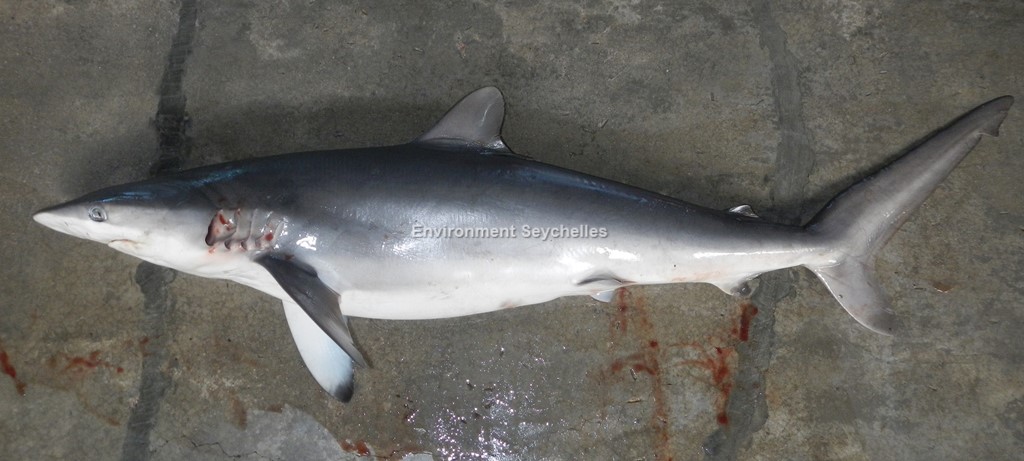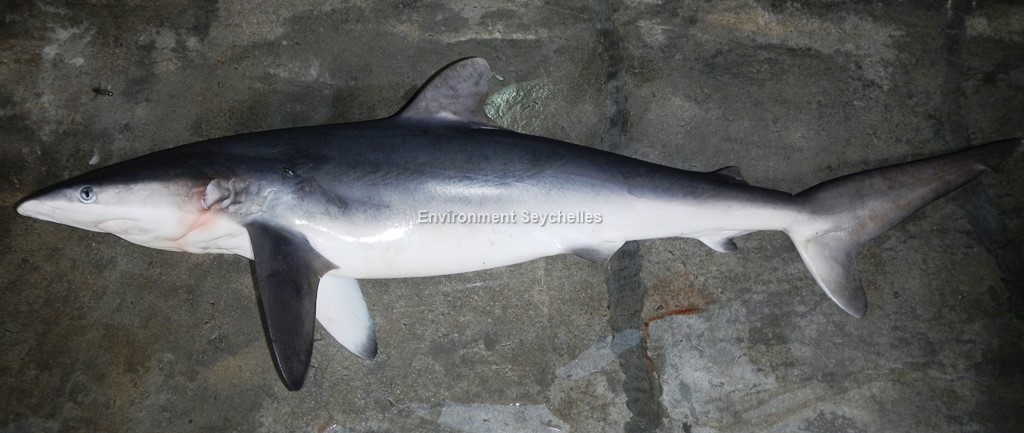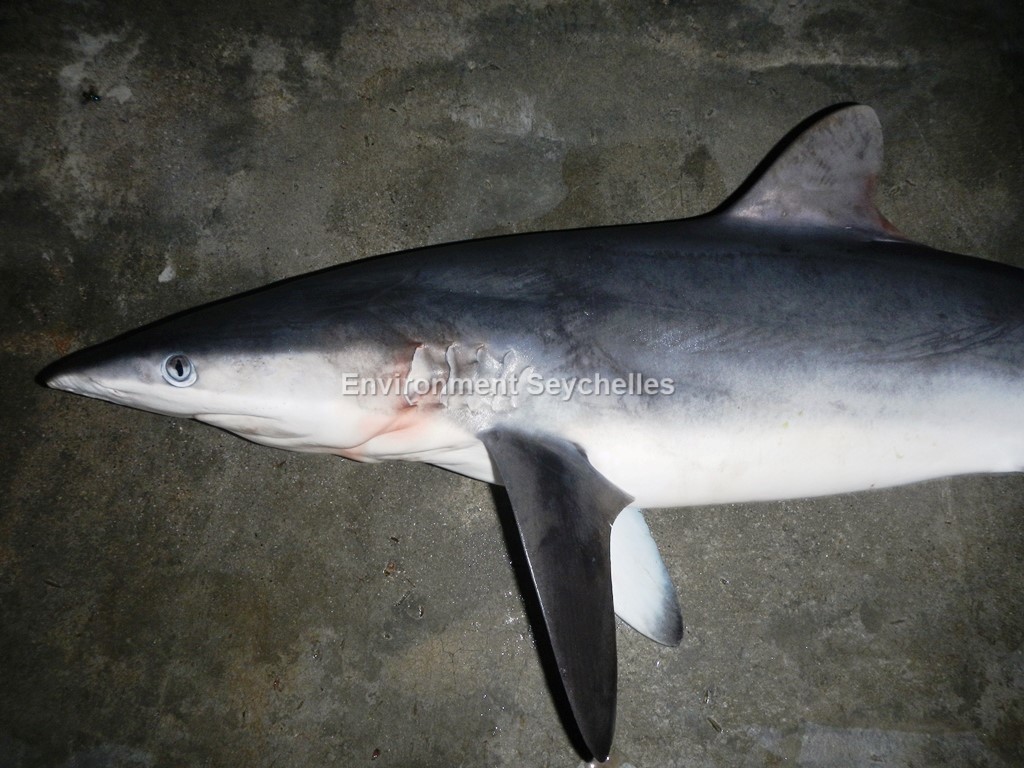Description:
Large, slim shark dark slate grey to near black dorsally, fading on flanks through grey (sometimes with metallic green tinge) to pure white ventrally. Relatively small and
unusually shaped first dorsal fin with origin behind pectoral free rear tips provides distinctive lateral profile. Remarkably smooth skin to the touch moving
“with the grain” front to back and hence the English name.
Fins: D1 relatively small falcate fin with distinctive rounded apex, slightly inclined descending rear edge to long rear tip. D1 origin behind pectoral free rear
tips. Plain colouration. All other fins with dusky tips. D2 low with very long rear tips. D2 origin over or slightly behind the origin of the anal fin.
Interdorsal ridge present. Pectorals long, narrow and falcate. Anal fin low with extended rear tip, originates slightly ahead of D2 with a deep notch in posterior
margin. Caudal lower lobe quite large.
Head: Moderately long flat, rounded snout, large circular eyes, inconspicuous labial furrows. Short gill slits.
Size:
Born 70-87cm TL. Mature: Male 185-217cm TL, Female 213-230cm TL, Maximum approx. 350cm TL.
Habitat and Ecology:
Oceanic, often abundant near the edge of continental and insular shelves (depth to 500m, but usually less than 200m) and often associated with schools of tuna.
Feeds mainly on teleosts. Viviparous 2-18 pups per litter, usually 5-7 pups. Juvenile sharks are found on the Mahé plateau. Generally leaves coastal nursery
grounds and moves offshore to oceanic waters as sub-adults.
In pelagic habitats, the Silky Shark is often associated with drifting materials on the surface and has been associated with very high FAD related
mortality (Filmalter et al. 2013).
Fishery Status:
This species is not protected. It is however illegal to fish for sharks with nets (Fisheries Act, Reg 16.c). It is subject to hook and line, short anchored long
line and illegal net fishing. Generally only juveniles and sub-adults are caught in the artisanal fishery as adults pup in shallower waters and then return to the
waters off the drop off or “bordaz”.
Notes:
In Seychelles the species is caught extensively by the industrial tuna fishery. By-catch from this fleet can be seen at Victoria market on occasion and the salted skin of the head of large specimens is commonly seen for sale. Juveniles and sub-adults are occasionally caught in the artisanal fishery.
References:
Ebert, D.A. et al (2013). Sharks of the World – A fully illustrated guide. Wild Nature press ISBN 978-0-9573946-0-5
Fisheries Act (2014). Prohibition of net fishing of sharks, Reg. 16c of 1st August 1998. (Carried over from the 1986 Fisheries Act as per Fisheries Act 2014 para 79: Savings and Transitional provisions).
Filmalter, J.D. et al (2013). Looking behind the curtain: quantifying massive shark mortality in fish aggregating devices. Frontiers in Ecology and the Environment 11(6): 291-296.
Froese, R. and D. Pauly. Eds. 2018. FishBase. https://www.fishbase.ca/summary/Carcharhinus-falciformis.html (26/05/19).
Nevill, J.E.G. et al (2015). An identification guide for the sharks of the Seychelles Artisanal Fishery.
Rigby, C.L. et al 2017. Carcharhinus falciformis. The IUCN Red List 2017: e.T39370A117721799. http://dx.doi.org/10.2305/IUCN.UK.2017-3.RLTS.T39370A117721799.en. (26/05/19).
Citation:
Nevill, J.E.G. (2019). Carcharhinus falciformis, Silky shark. Seychelles Seatizens. www.seatizens.sc. https://seatizens.sc/species/carcharhinus-falciformis-muller-henle-1839/ (Edited 22/09/21).




There are no comments